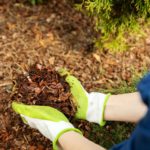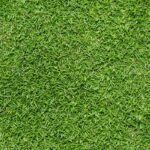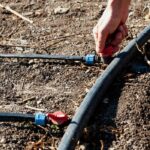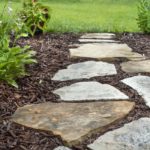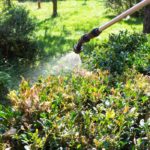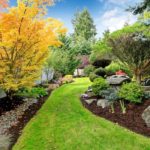Mulching your yard isn’t something you need to do every day — most people only apply mulch once a year. But when’s the best time to apply mulch?
The best time to mulch your yard is in mid to late spring. The mulch helps the soil warm up and prevents weeds from germinating. Applying organic mulch in the spring will provide nutrients to the soil throughout the growing season. Be sure to use landscaping fabric underneath.
Let’s look at what makes spring the best time to mulch your yard and how to apply mulch properly. If you time things right, you can do the mulch project one time early in the season, and enjoy the benefits of it as your plants come alive in the spring!
The Best Time to Mulch Your Yard
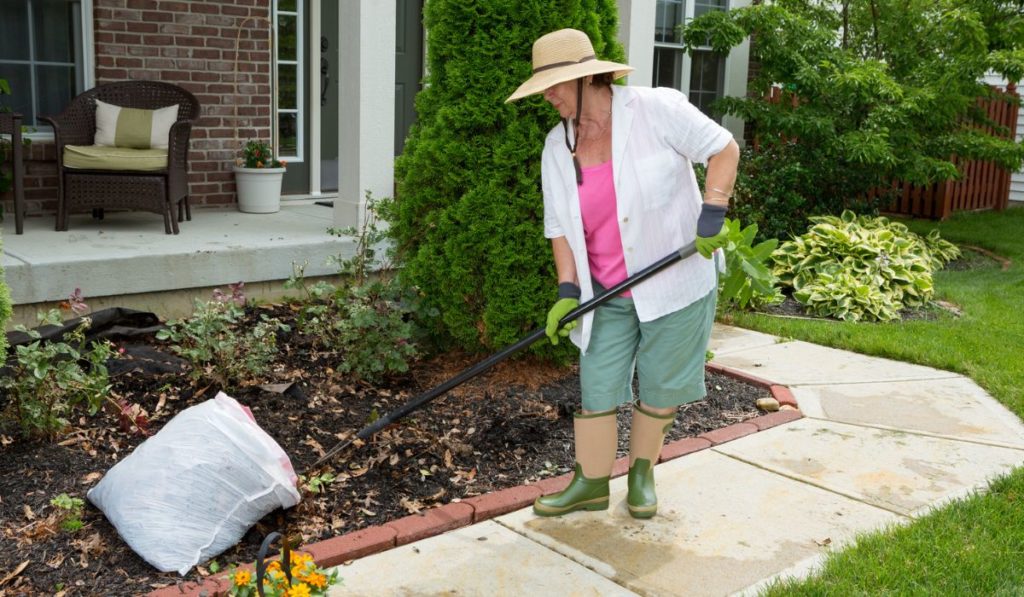
The best time of the year to mulch your yard is around late spring, when the soil begins to warm. Getting the timing right in terms of when to mulch your yard is very important, as it will affect how well the mulching works to protect and improve your soil quality.
Mulching your yard at the right time of the year will keep the soil moist, cool, and weed-free, allowing young plants to grow and flourish. It also makes for great compost and encourages earthworms, which are crucial for good soil quality.
However, applying mulch to your yard too early or too late can have negative effects on the soil and plants.
Apply mulch too early (say early spring), and the mulch will prevent the natural warming process of the soil. On the contrary, applying mulch too late in the fall will insulate the ground too much, preventing the natural hibernation process of plants.
You don’t need to be too stressed out about the exact date to mulch your yard. As long as it’s done during the spring season, your plants and flowers will have the best chance of growing healthy.
How to Mulch a Yard
Mulching a yard is a simple process, but you need to know the basics of what you’re doing. Firstly, the two main types of mulch are organic and Inorganic, and both are very useful in their own ways.
And, while many will be tempted to skip this step, know that your mulch is going too last longer and be more effective if you’ll also take the time to lay down landscaping fabric (on Amazon) around your plants, to really help keep those weeds out!
The right amount of mulch to apply to your yard is roughly 3-4 inches, evenly spread across the area of your yard. You will need to apply mulch at least once a year, but with organic mulch, it’s better to repeat the process every few months.
Start off by pouring small piles of mulch a few feet apart in your yard. Then, use a garden rake to spread the mulch evenly across the entire space, making sure that there are a few inches of mulch everywhere. To make life easier, use a wheelbarrow to move the mulch across your yard.
When working around trees, keep the mulch a few inches away from the base of the tree, and the same applies to all plants. The garden rake can also cause a lot of damage to plants, so be careful and use it gently.
How to Mulch Flower Beds
Applying mulch to flower beds is just as important as applying it to your yard because it provides the same benefits to your flowers as it does to other plants. Most flower beds dry up very quickly, and mulch helps with retaining the moisture in the soil.
We often look at our flowers more often and with more scrutiny compared to the rest of our plants, and so you may want to use a type of mulch that is more pleasing to the eye, such as glass marbles, decorative seashells, color-enhanced wood mulch or straw mulch.
All of these options will make your flower beds look naturally beautiful, and you won’t be disappointed after investing in some premium mulch.
Choosing the Right Mulch
When deciding on the best mulch for your yard, there are a couple of things you need to be aware of. Firstly, let’s get a better understanding of the different types of mulch so that you can make an informed decision.
Inorganic mulch can’t decompose and become compost. Examples of inorganic mulch are gravel, pebbles, and rubber mulch. This type of mulch is more cost-effective since it won’t decompose and doesn’t need to be replaced often.
It also helps reduce the number of insects around the flower beds in your yard. However, you need to be careful with inorganic mulch as it can reach very high temperatures and harm your plants in that way.
Organic mulch is any mulch that will decompose and become compost, and it’s widely considered to be preferable to inorganic mulch because it releases nutrients into the soil over time. Organic mulch also increases the production and quality of fruits. Examples of organic mulch are grasses, leaves, bark (on Amazon), pine needles, and compost.
There are some things that you need to take care of when using organic mulch, as applying it in excess may harm the soil. Grass clippings, for example, are easy to use and readily available, but they can cause nitrogen deficiency in the soil as they decompose.
Another example is that when pine needles start decomposing, it acidifies the soil, and so it’s not a good choice of mulch to use around plants that prefer more neutral soils.
Tips and Tricks
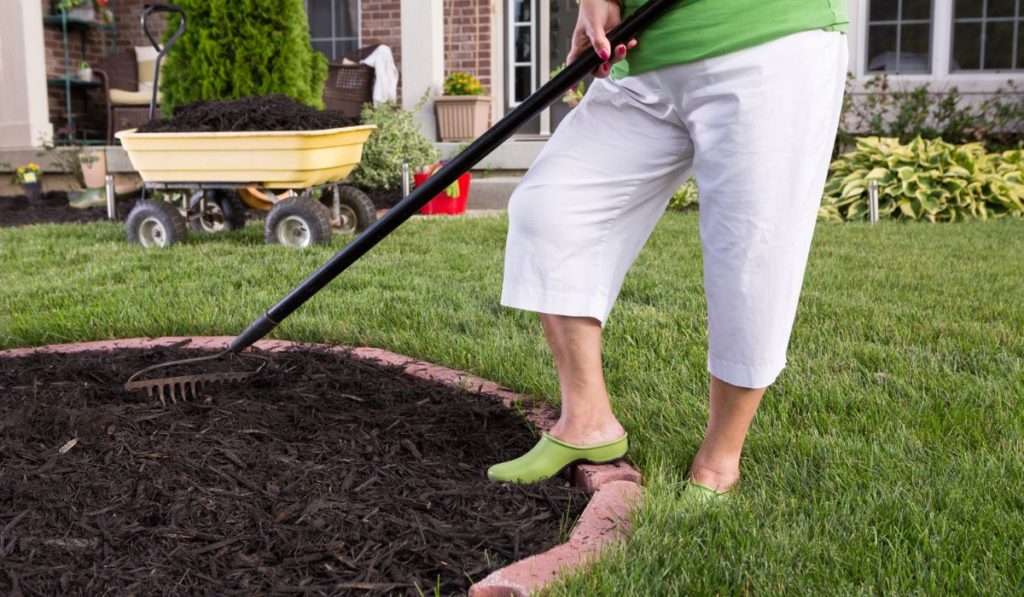
Applying mulch isn’t as simple as opening a bag of mulch and spreading it across the lawn. Apply too much mulch, and it’ll inhibit plant growth. Apply too little, and the mulch won’t have the intended effect.
Here are some tips and tricks to follow when applying mulch:
- Don’t Mulch With Rocks: There are many reasons why rocks shouldn’t be used as mulch, even if they’re abundant and beautiful. Firstly, weeds love growing amongst the tiny gaps between the rocks, making it more of a hassle for you. Rocks also heat up pretty fast, and the temperatures can go very high. This increases the soil temperature and dehydrates the plants.
- Place Newspaper or Fabric Under the Mulch: Use newspaper at the bottom of your ‘real’ mulch to help with controlling insects in your yard. You can also use landscape fabric (on Amazon) for a similar effect, as we discussed above. Newspaper is more environmentally friendly, but will degrade quicker.
- Avoid Certain Areas: Don’t put mulch close to the foundations of your home unless absolutely necessary, as it could be an invitation for termites.
- Make Your Own Mulch: You can convert many household items into mulch and save yourself some money. Crushed leaves that have fallen in your garden make for excellent mulch, and it takes a few months to break down into excellent compost for young plants. You can even use grass clippings, ground coffee, or pine needles as homemade mulch.
- Get the Depth Right: Always make sure the mulch is at the correct depth. While 2 inches of mulch is usually enough, aim for 3 inches, and you won’t have to replace the mulch as often.

